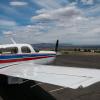CHT Spread
-
Members Online
- N9201A
- ArtVandelay
- Jake@BevanAviation
- Brad B
- FoxMike
- Flyler
- Lptoro
- redbaron1982
- Fly Boomer
- EricJ
- 47U
- MikeOH
- Justin Schmidt
- Bolter
- natdm
- PhateX1337
- Larry
- fmg85
- Mac80
- cliffy
- Matthew P
- Shadrach
- Stanton R
- noonecaresworkharder
- N201MKTurbo
- eman1200
- AIREMATT
- Austintatious
- TCC
- Steve2019
- Danb
- Kerrville
- 67 m20F chump
- FlyingScot
- MB65E
- IvanP
- FlyingDude
- 231GKY
- DanM20C
- Piaggio410
- Chester


Recommended Posts
Join the conversation
You can post now and register later. If you have an account, sign in now to post with your account.